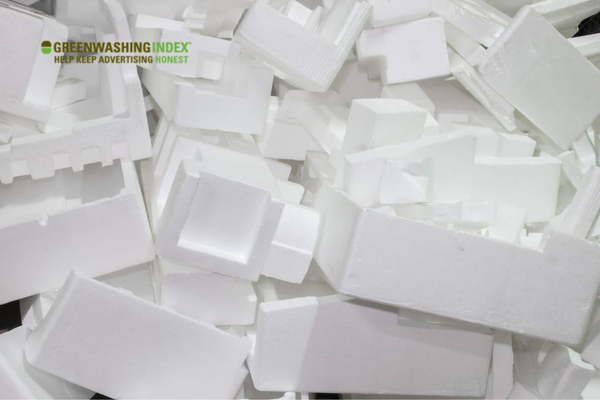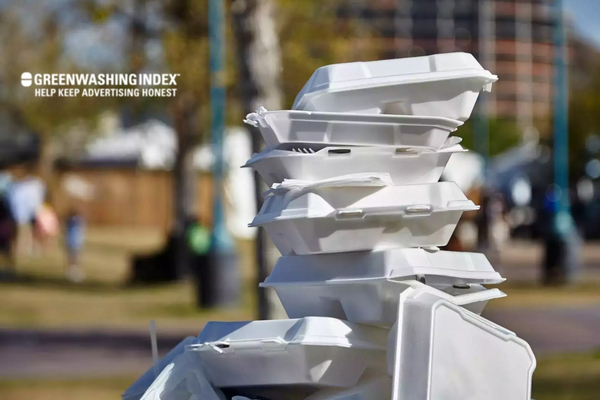

Hey there! If you’re looking to make your mark on the planet by learning how to recycle Styrofoam, you’ve found the perfect spot. As your go-to sustainability friend, I’ll walk you through why recycling this fluffy stuff is so important and how it’s not as hard as it seems.
From spotting which pieces can start their recycling journey, to finding a new life for them, we’re going to explore all the nooks and crannies of Styrofoam recycling. And because we care about Mother Earth just as much as you do, I’ll even throw in some smart alternatives and innovative solutions that keep us away from using and tossing Styrofoam in the first place. Let’s dive in together!
Recycling Styrofoam can seem like a puzzle. But why is it important, and what are the bumps in the road? Let’s break it down into simpler bits. What exactly is this material we see almost every day, and why should we bother recycling it? And once we decide to recycle it, what hurdles do we need to jump over to make sure it’s done right?

Styrofoam, often seen in coffee cups, take-out food containers, and packing peanuts, is actually a brand name for expanded polystyrene (EPS) foam. Despite its common use in everyday items, EPS poses significant environmental issues when not disposed of properly.
Environmental Benefits of Recycling:
Recycling this material paves the way toward a more sustainable future by addressing these concerns head-on—ensuring that fewer resources go to waste while cutting back on pollution.
Despite the benefits, recycling this material comes with its own set of obstacles:
For those aiming at an eco-friendly lifestyle or simply looking to reduce their carbon footprint, overcoming these challenges is key. Yet understanding these hurdles provides insight into why every little step towards proper disposal makes a big difference in our environment’s health.
Also Read: DIY Composting Toilet Guide: Build Cheap, Eco-Friendly Now!
Getting started with Styrofoam recycling can seem hard at first. But, once you know how to get your Styrofoam ready, it’s pretty easy! First, we will learn how to tell apart the kinds of Styrofoam you can recycle from those you cannot. Then, we’ll go over the best ways to clean and get your Styrofoam ready so that it can be happily recycled.

Not all Styrofoam is made equal when it comes to recycling. Here’s how you can figure out which is which:
Remember these tips when sorting through your items – they will make sure only proper styrafaom makes its way into the recycling bin.
After identifying which styrofoam can be recycled, here’s how you should clean and prepare them:
By following these steps closely, we help make sure our effort towards sustainable farming truly counts towards bettering our environment!
Also Read: Paper Bags Recycle: A Must-Know Sustainability Guide
If you’re eager to give your Styrofoam items a second life instead of tossing them in the trash, you’re in the right place. Finding the right way to dispose of Styrofoam can feel like a puzzle, but it’s simpler than it seems.

Whether you’ve got packing peanuts from your recent online shopping spree or containers piling up, knowing where to take them is half the battle. We’re about to dive into where you can take your Styrofoam for recycling and even how to send it back if no local options exist.
Looking for a place to take your Styrofoam? Here’s how you can find drop-off sites ready and waiting for your recyclables:
Before You Go:
By doing just a bit of research, you can easily find a suitable spot close by where your old packaging could help cushion someone else’s treasures instead of contributing to landfills.
Not finding any local spots taking back old foam cups and containers? Mail-back programs might be your answer! These are fantastic options when local facilities aren’t equipped for specific recyclables like Styrofoam.
Here’s how they work:
While there might be costs associated with these mail-in options due primarily because shipping anything has its price tags involved—it extends styrene products’ life beyond landfill eternity by turning them into new useful items again through advanced material recovery processes not always available locally everywhere yet!
Taking advantage of these innovative solutions contributes significantly towards reducing plastic waste’s environmental impact even when done from afar—expanding possible action against pollution further than ever before possible directly at one’s doorstep convenience-wise until more widespread ground-based facilities catch up world-over eventually hopefully surely enough soon enough!
Also Read: Recyclability of Milk Cartons: Is It Possible or Not?
Are you curious about the latest ways people are making old Styrofoam into something new and useful? We’re seeing some cool stuff happening, and it’s exciting to see how this can change things for our planet. Let’s look at how smart folks out there are turning our Styrofoam trash into treasure. You’ll be amazed at the new technology that’s giving waste a second life!
In the world of recycling, Styrofoam has always been a bit of a tough cookie. But fear not! There are now some game-changing methods that promise to make recycling this material easier and much more effective:
Each of these technologies offers a fresh path forward for Styrofoam recycling, transforming what used to be considered trash into valuable resources for creating new products. It’s not just about getting rid of waste anymore; it’s about reimagining what we do with what we’ve already used.
If you’re eager to turn a new leaf towards a more eco-friendly lifestyle, replacing and minimizing your use of Styrofoam is a great start. Not only can this help reduce harmful waste, but it also pushes us towards sustainable living habits. Ready to make a change? Let’s explore some practical and easy-to-adopt alternatives that can seamlessly fit into your daily life, steering clear of Styrofoam for good.
Switching out Styrofoam doesn’t have to be hard. Here are several easy swaps you can make:
By making these switches, you’re not just helping the planet; you’re also stepping into a community focused on positive change for our environment. Each small step counts towards a larger impact, showing that sustainability isn’t just about big gestures; it’s about everyday actions too.
We talked about how to recycle Styrofoam, from cleaning it to finding places that take it. We also looked at new ways to recycle Styrofoam and other ideas instead of using Styrofoam. Remember, small steps can make a big difference in keeping our planet clean and green.
If you’re eager to learn more ways to help the environment, stay tuned for more tips and tricks on our site. Discover smart, eco-friendly practices for daily life in our engaging blog posts.
